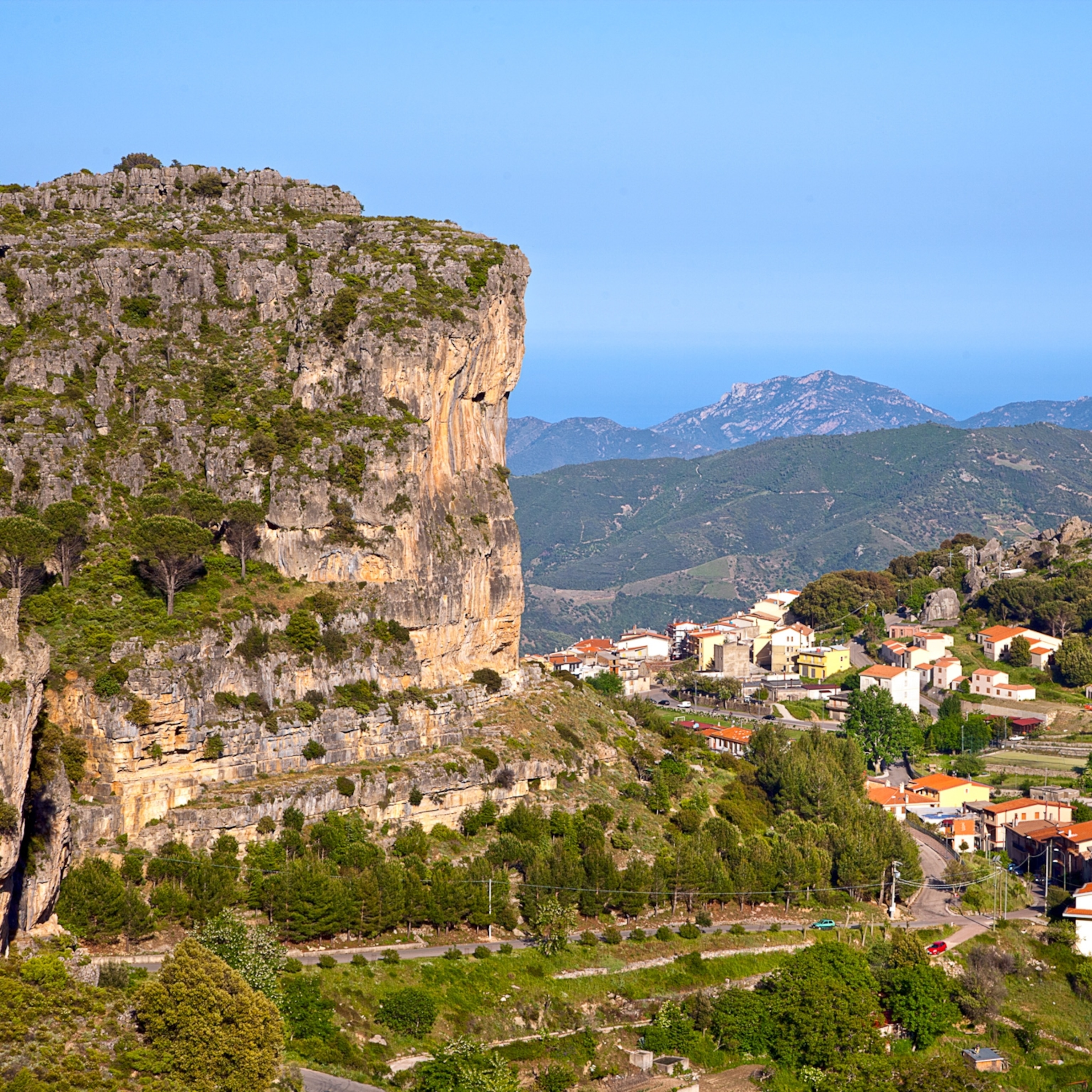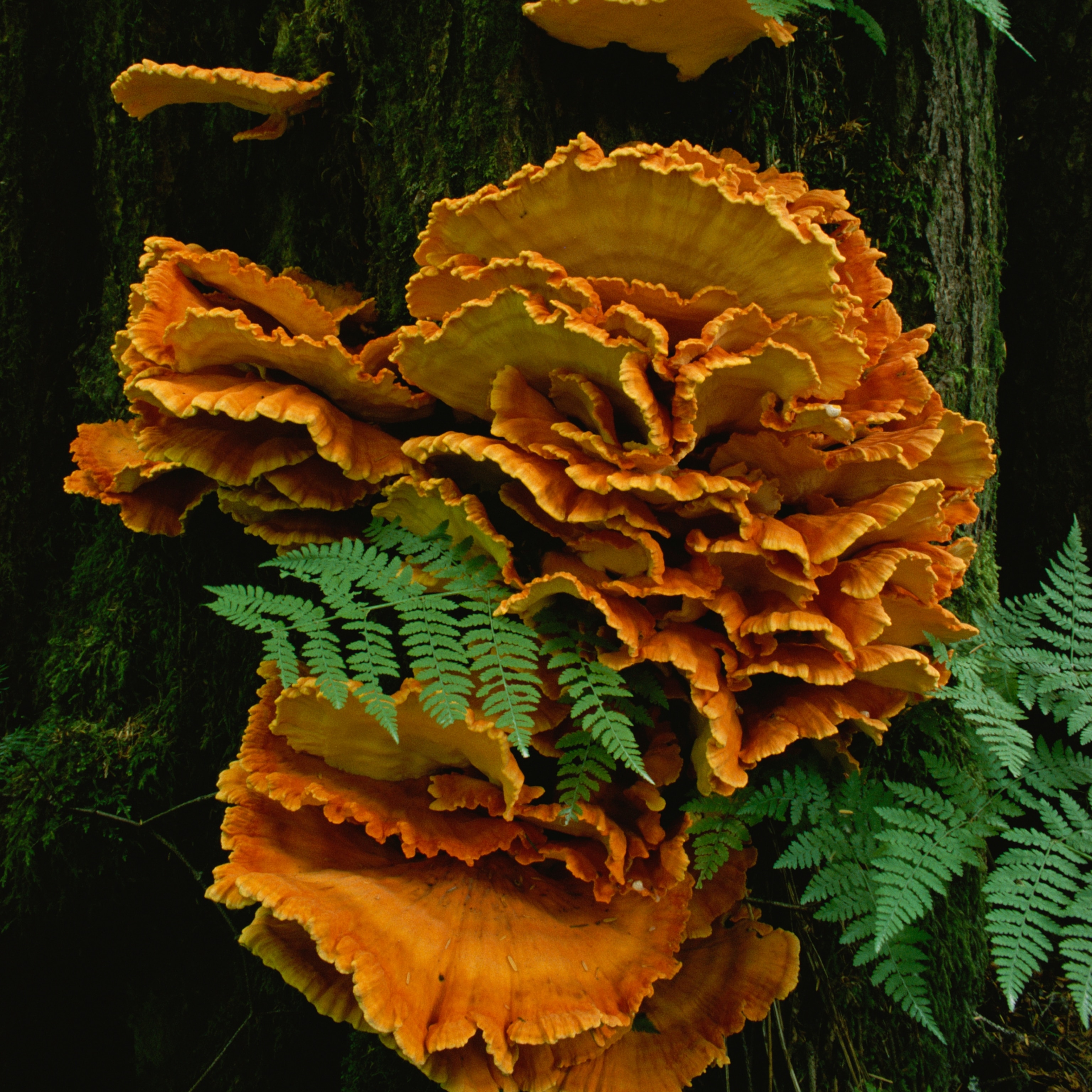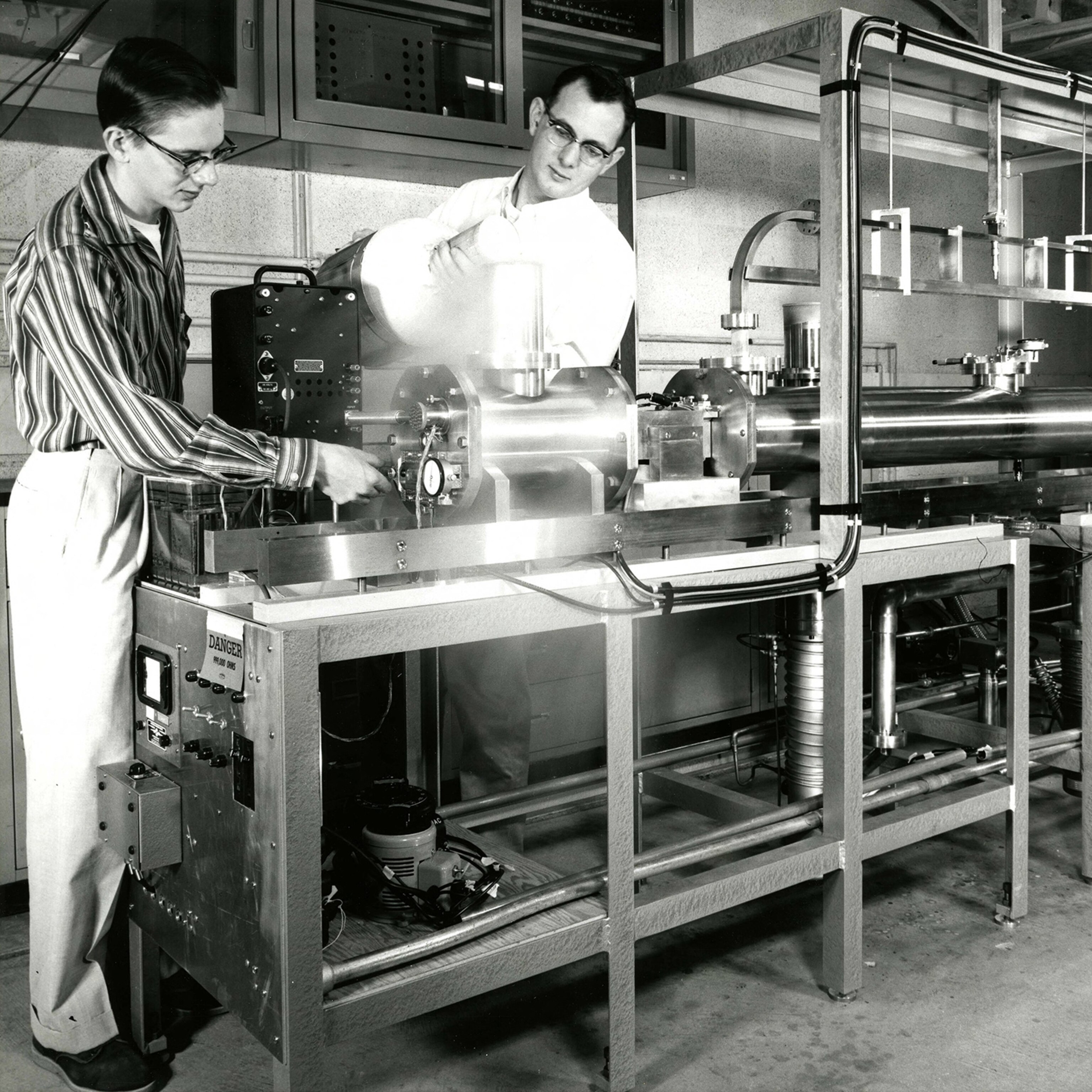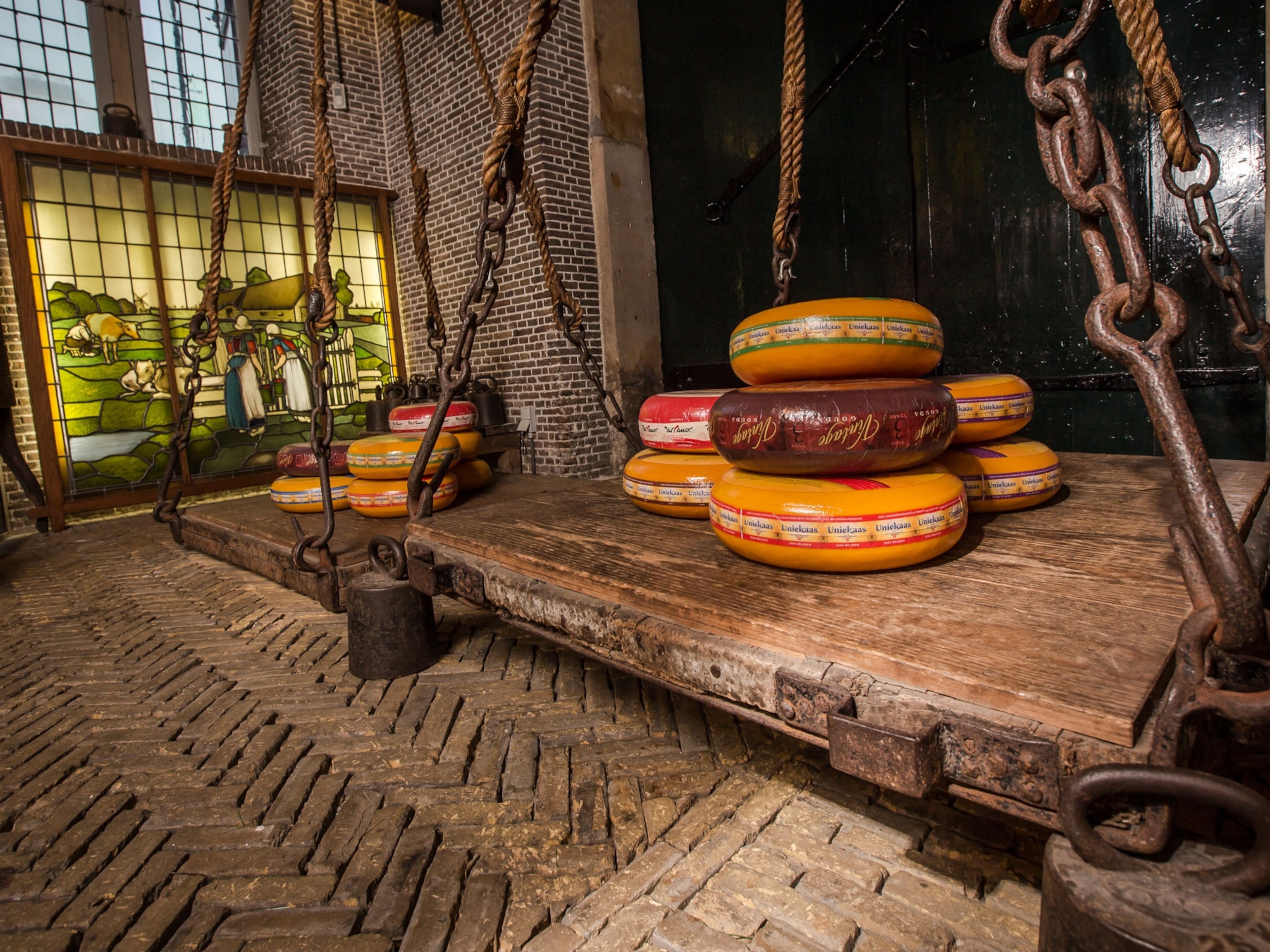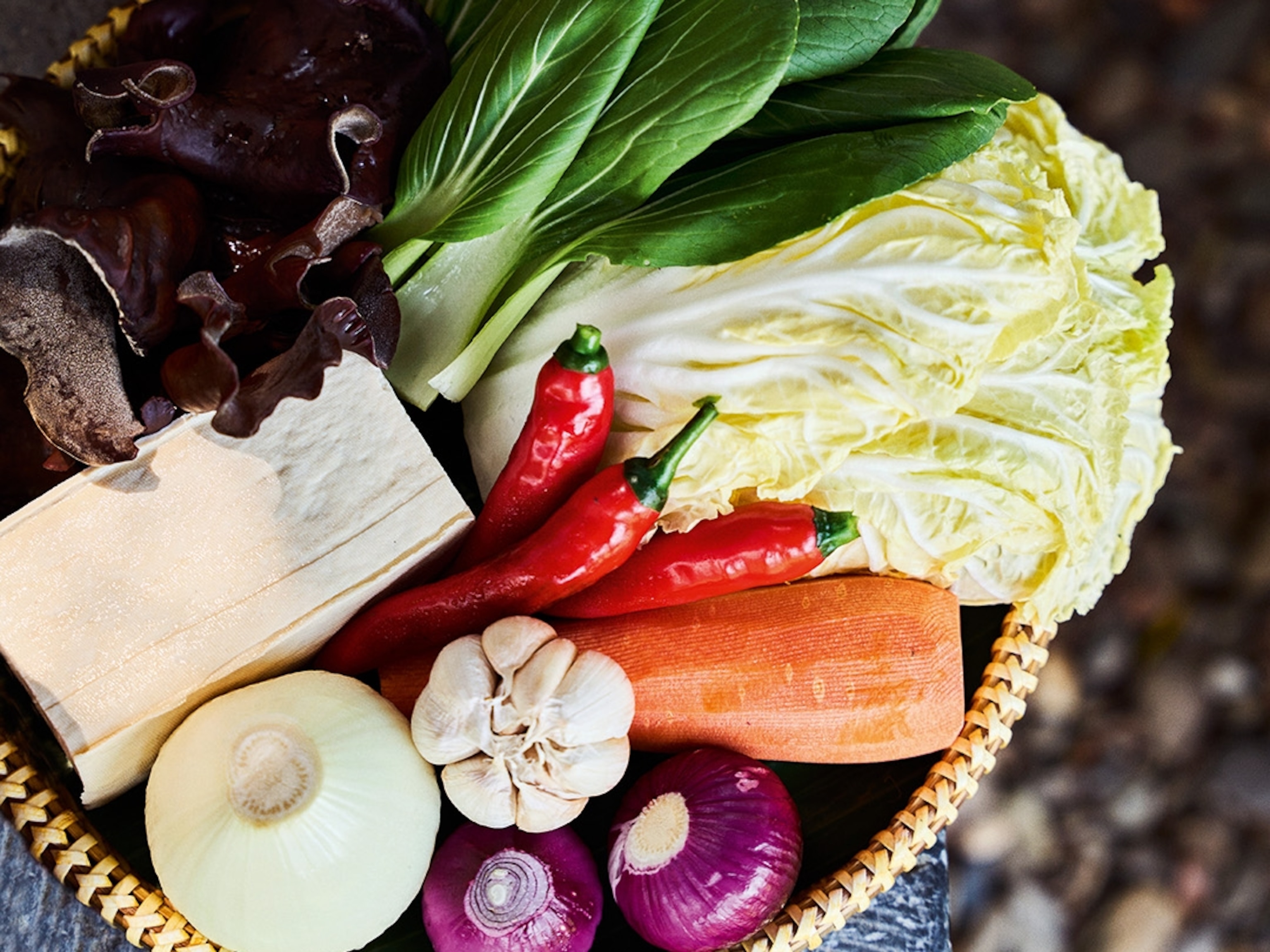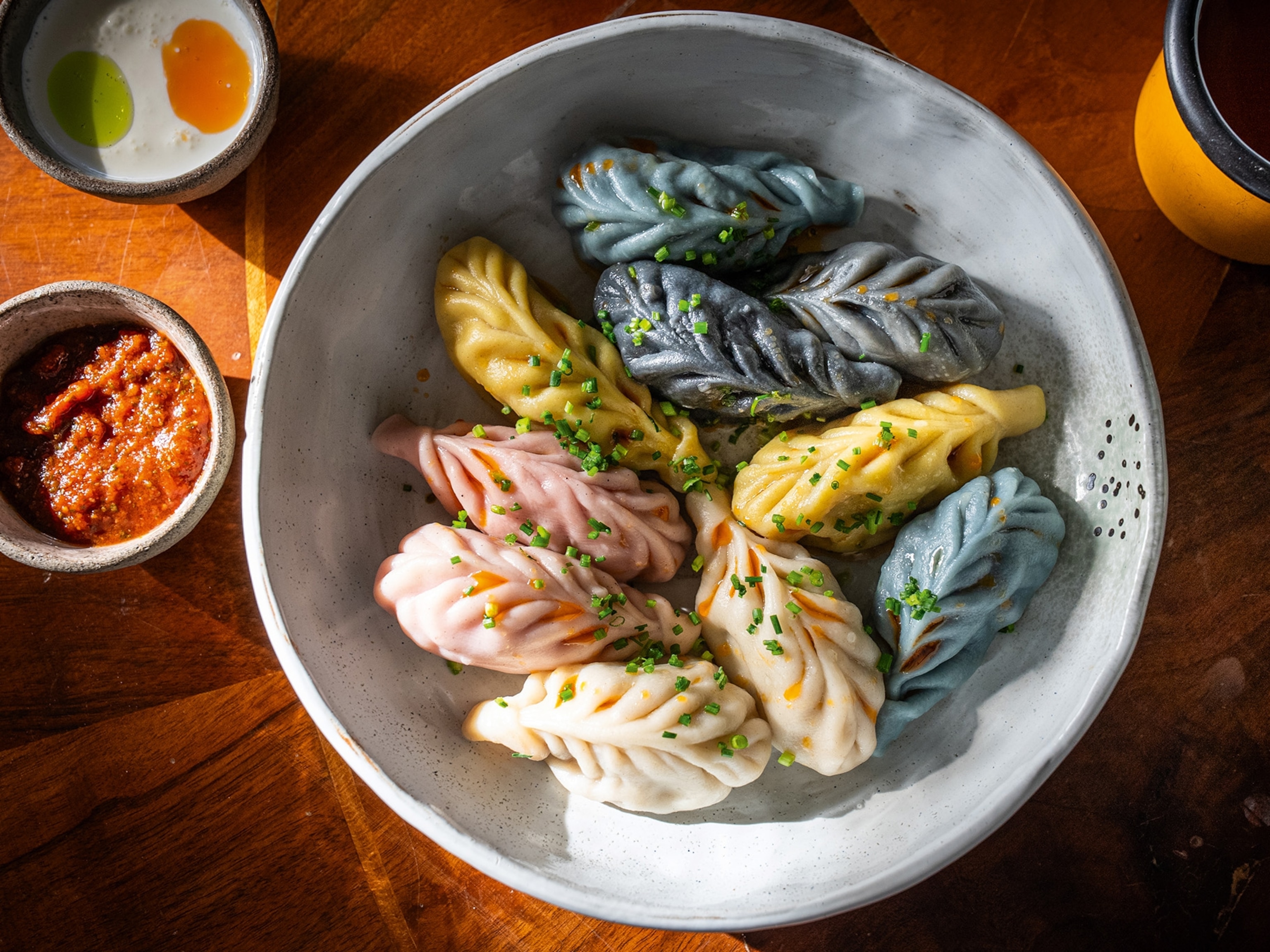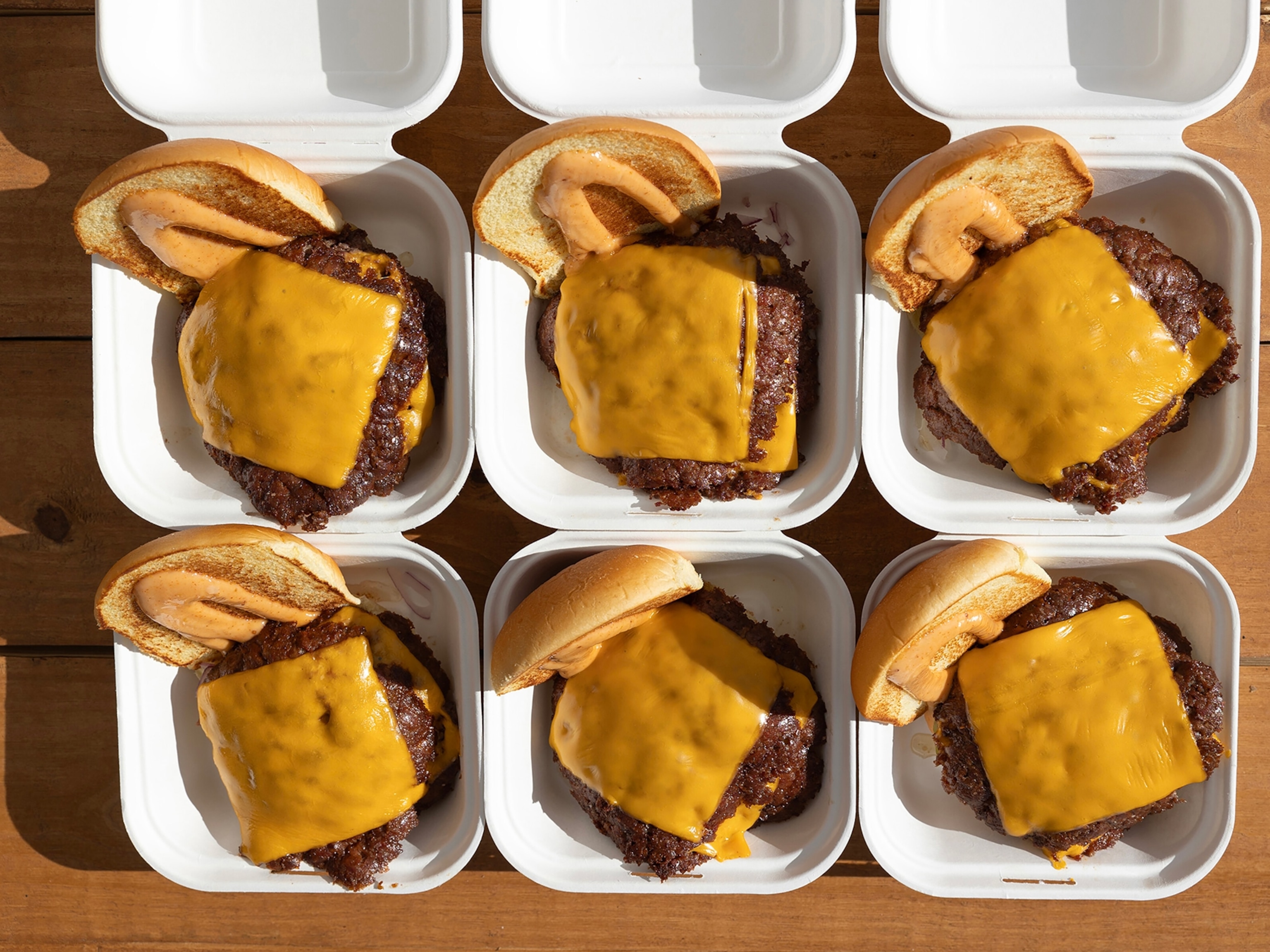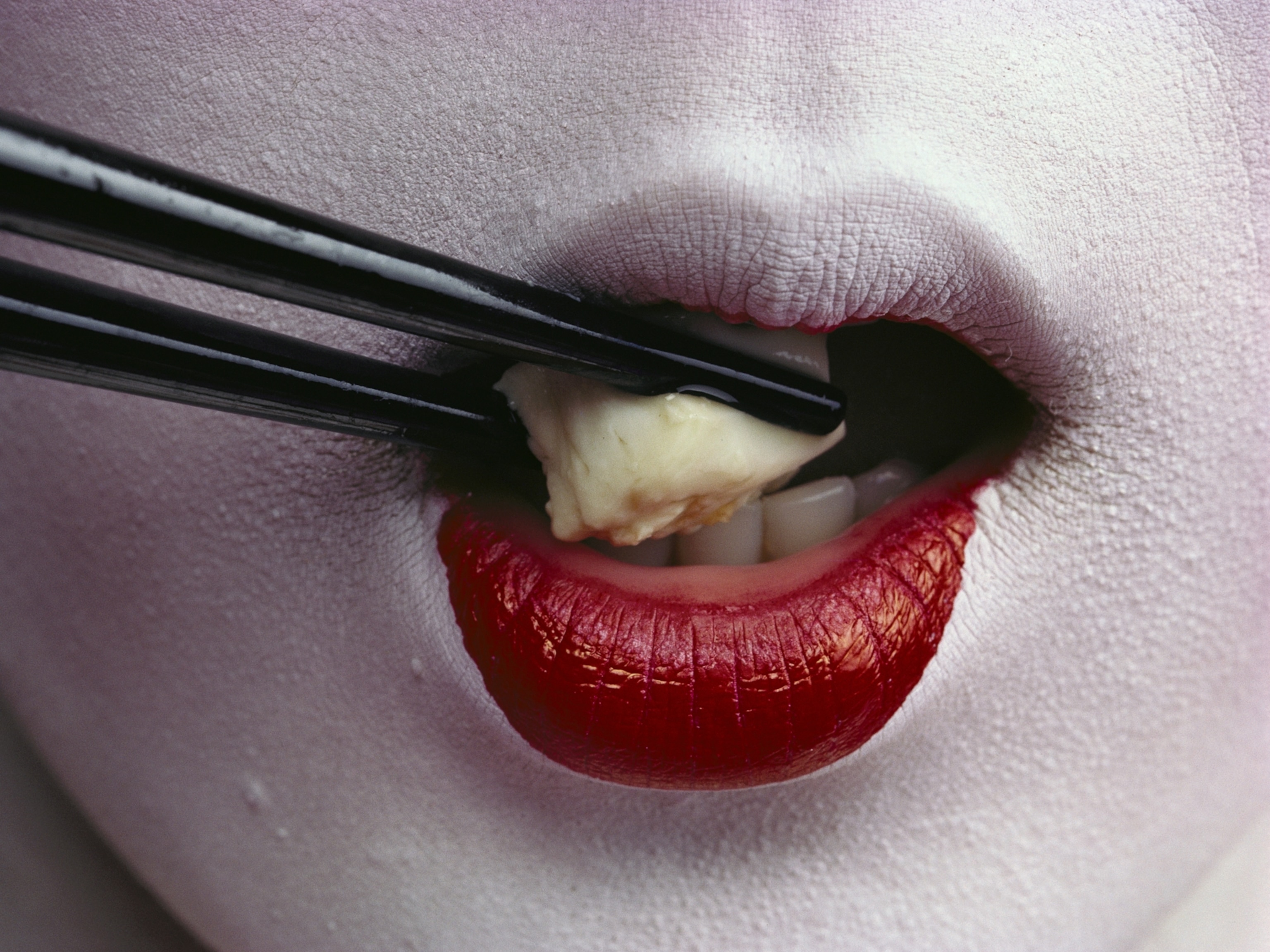
What’s the Matter with Blue Chicken?
In 1975 the late George Carlin appeared on Saturday Night Live with his famous rant about blue food.
Why is there no blue food? I can’t find blue food—I can’t find the flavor of blue! I mean, green is lime; yellow is lemon; orange is orange; red is cherry; what’s blue? There’s no blue! Oh, they say “Blueberries.” Uh-uh; blue on the vine, purple on the plate. There’s no blue food! Where is the blue food? We want the blue food! Probably bestows immortality! They’re keeping it from us!
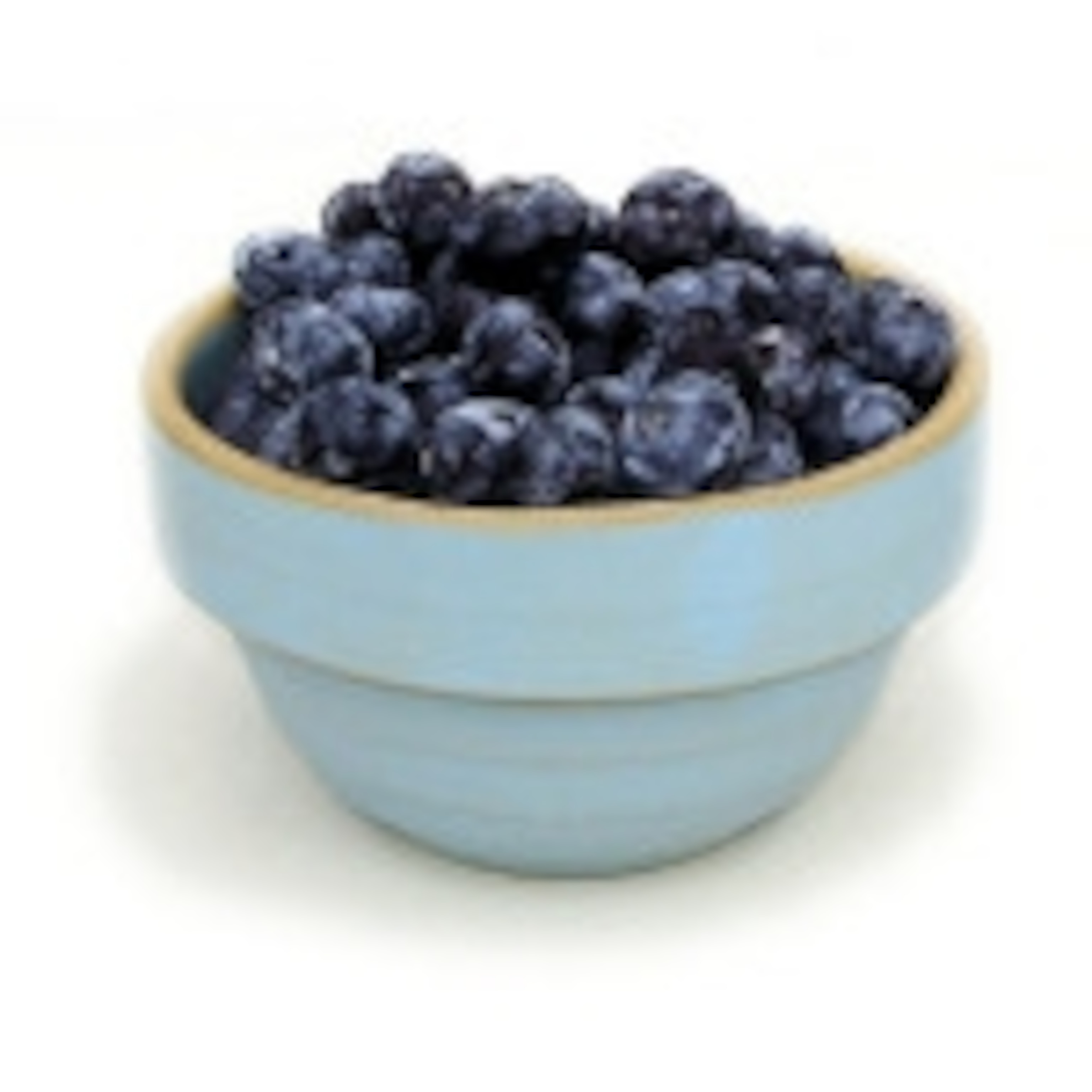
Well, Carlin pretty much has it right—there’s not no blue food, but there’s certainly not a lot of it. Blueberries, fresh-picked, are blue—though squashed or turned into jam, they’re purple; and added to muffin mix, they sometimes, bizarrely, turn green. The blue in blueberries—like the blue in blue corn, the purple in grapes, plums, eggplants, and purple potatoes, and the red in red cabbages—is due to a class of pigments called anthocyanins of which hundreds are found in nature. Red cabbages contain 36 different anthocyanins; blueberries contain 15.
The pea-pod-shaped fruits of Asia’s Decaisnea fargesii—tellingly referred to as dead man’s fingers—are a cyanotic shade of blue; and blue cheeses are rendered a streaky blue by strains of Penicillium mold. But that’s about it. Blue, at least in nature, simply isn’t a hot color for food.
There’s some evidence that blue food turns us off. Some diet programs even suggest that those determined to lose weight should dye their food blue, since blue is an appetite suppressant. Blue, signaling spoilage, may strike an evolutionary chord: we all know that blue meat is bad news.
Eating, in part, begins with our eyes—which is why the gray glop dolled out to the orphans in Oliver Twist is so effectively repulsive. The stuff could taste ambrosial for all we know, but it we can’t get around the fact that it looks like wallpaper paste. Similarly color is a major part of taste perception. A classic example is butter—which, in its natural state, can be a lard-like white but is turned an appealing butter-yellow with annatto, a natural dye.
Charles Spence—an experimental psychologist from Oxford University—points out that color can change our taste experience. We perceive red-colored foods, for example, as being up to 20% sweeter than they actually are; and green foods as being more sour. There may be an evolutionary explanation for this, Spence suggests: human expectations may be skewed by our long history of watching tongue-curling, unripe green fruits sweetening as they ripen and turn red.
But what about blue? Much of the blue food we encounter these days—blue M&Ms, blue raspberry popsicles, blue cotton candy, blue breakfast cereal—is made blue by artificial dyes. Blue No. 1—also known as “Brilliant Blue”—is a petroleum-derived dye; Blue No. 2 or indigotine is a synthetic version of indigo, the plant-based dye that once put the blue in blue jeans. (Nearly all indigo used today is synthetic.)
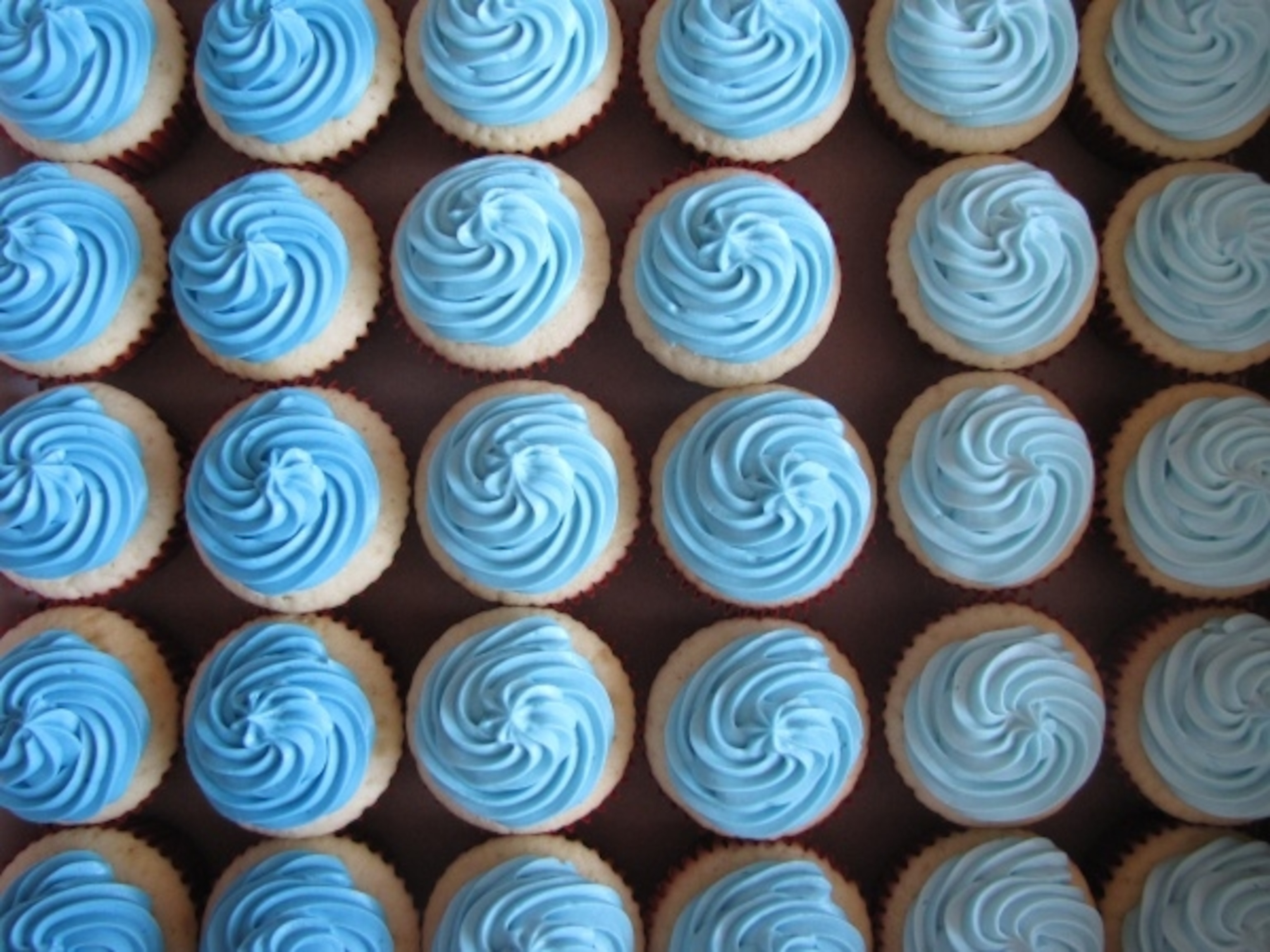
Food manufacturers argue that artificial color enhances natural colors often lost in processing and provides a catchy color identity to foods that might otherwise be visually blah. For whatever reason, we now use a lot of it: food dye consumption in the United States is up five-fold since 1955. We eat it in cereal, candy, soda, Jello, hot chocolate, maraschino cherries, cupcake frosting, and canned peas.
Though the bulk of research indicates that artificial dyes are harmless, a much-touted 2007 study from the University of Southampton caused public alarm when it indicated that hefty doses of dye increased hyperactive behavior in children. This study has problems—it has been criticized for inadequate controls (what else are the kids eating?) and for the anecdotal and non-standardized nature of the evidence (it can be difficult to tell if a three-year-old is wiggling more than usual)—but it was enough to convince the European Union to require warning labels on dye-containing food. The targeted dyes include Red No, 40, Yellow No. 5, and Yellow No. 6, which collectively account for about 90 percent of the dye in American food. There’s also been a move to replace artificial dyes with natural coloring agents—for example, extracts from beets, turmeric, and pumpkin—though scientists warn that “natural” doesn’t necessarily mean “safe.”
Subsequent research has been inconclusive. There’s some indication that in a small subgroup of kids with attention-deficit/hyperactivity disorder (ADHD), symptoms may be exacerbated by food dyes—but other studies show no effects at all. Food dyes have a long and safe history, and the FDA, so far, seems to feel that there’s not enough evidence to rock the boat.
Natural blue is good for you. The blue in blueberries, for example, puts them near the top of the list of healthy foods, crammed as they are with antioxidants, known to beef up the immune system and combat disease.
The real problem with artificially dyed food may be its accompanying baggage: wild-colored food tends to be high in sugar, which everybody agrees isn’t good for us. Other than that, there’s no real reason not to chow down on blue ketchup, blue birthday cake, or blue-dyed chicken.
Except for the fact that it’s—well, blue.
This story is part of National Geographic’s special eight-month Future of Food series.
References
- L. Eugene Arnold et al. Artificial Food Colors and Attention-Deficit/Hyperactivity Disorder: Conclusions to Dye For. Neurotherapeutics, July 2012, pp. 599-609.
- McCann, Donna et al. Food additives and hyperactive behavior in 3-year-old and 8/9-year-old children in the community: a randomized, double-blinded, placebo-controlled trial. The Lancet, 6 September 2007.
- Anthocyanins change color in response to pH—that is, they’re bluish in basic conditions and red when exposed to acid. For homestyle chemists, red cabbage juice makes a dandy pH indicator. Learn all about it at Do It Yourself: Cabbage.

